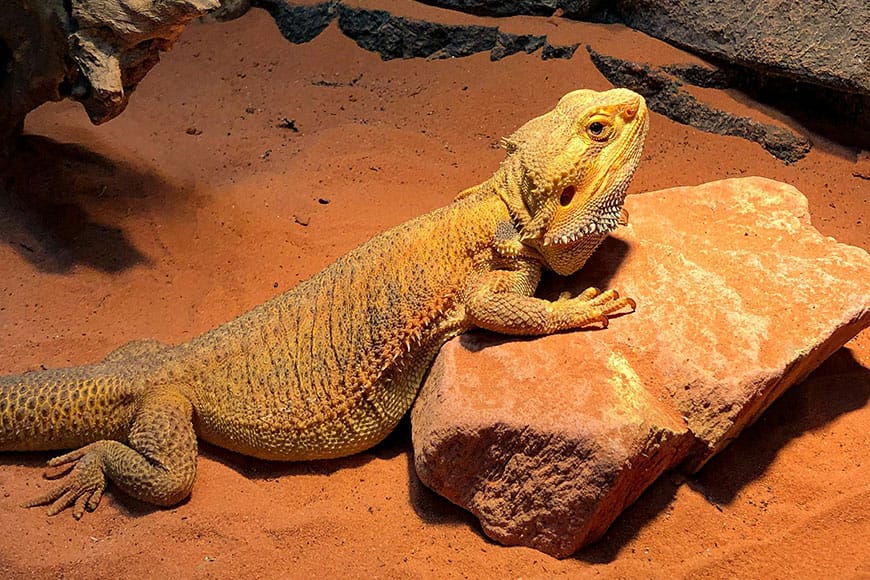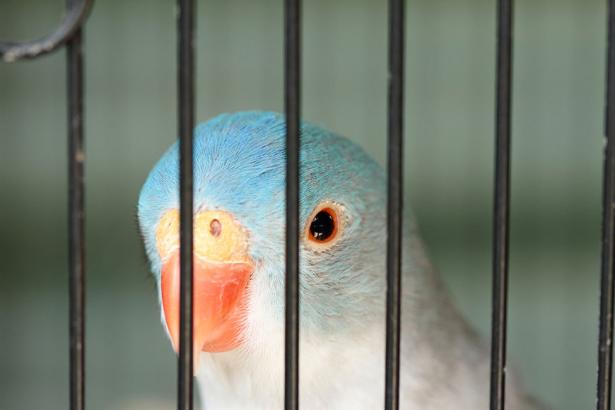The right lighting and temperature conditions within a reptile enclosure are fundamental to the health and wellbeing of these animals. In the wild, reptiles are adept at navigating their environment to find the optimum conditions needed for thermoregulation and exposure to natural sunlight, which provides essential ultraviolet (UV) rays.
Replicating these conditions in captivity is imperative, as improper lighting and temperature can lead to a range of health issues, from metabolic bone disease to stress-induced disorders.
Temperature Gradient Creation
Reptiles are ectotherms; that is, they rely on external sources to regulate their body temperature. In captivity, it is essential to create a temperature gradient in the enclosure, providing areas for the reptile to warm up or cool down as necessary.
A temperature gradient mimics the natural variation in temperatures that would occur in a reptile’s habitat over the course of the day and across different micro-environments.
To establish this gradient, the enclosure should have a designated basking area with a higher temperature, which serves as the thermal maximum. At the opposite end of the enclosure, there should be a cooler area, which will be the thermal minimum. The gradient between these points provides a range of temperatures for the reptile to choose from.
The basking spot should be equipped with a heat lamp or ceramic heat emitter that raises the temperature of that area to the species-specific preferred optimal temperature zone (POTZ).
Temperatures should be monitored with accurate thermometers placed at both the warm end and the cool end of the enclosure. For tropical species, basking temperatures typically range from 26°C to 38°C, while temperate species may require a basking spot within the range of 20°C to 35°C.
Heating Elements
Different types of heating elements can be employed within a reptile enclosure, each with its own set of advantages:
- Incandescent Bulbs: These are a common heat source for basking areas but produce visible light and can disrupt the reptile’s photoperiod if left on for extended periods.
- Ceramic Heat Emitters: These are excellent for maintaining ambient temperatures without emitting light, making them suitable for use throughout the day and night. Remember, you must make sure the enclosure is not susceptible to rapid changes in temperature.
- Under-tank Heaters: These can provide a constant source of belly heat, which is particularly important for some reptile species. However, they should always be used with a thermostat to prevent overheating.
- Basking Lamps: These lamps, usually spotlights, focus heat onto a specific area to create a basking spot. They can be combined with UV bulbs to provide both heat and UV radiation.
Significance of UV Lighting
Beyond temperature, UV lighting is instrumental for most reptile species. UV radiation is divided into two main types that are important for reptiles: UVA and UVB. UVA light is visible to reptiles and helps them recognize food and mates, and it can influence their circadian rhythms.
UVB light is invisible and essential for the synthesis of vitamin D3, which is necessary for the proper absorption and metabolism of calcium. Without UVB, reptiles can suffer from metabolic bone disease, which leads to deformities and can be fatal.
To provide UV light in a captive setting, specialised fluorescent or mercury vapour bulbs designed for reptile use must be incorporated into the enclosure. These bulbs should span at least half the length of the enclosure to allow for adequate exposure as the reptile moves within its habitat.
When setting up UV lighting, the following considerations should be taken into account:
- Distance: UVB potency decreases with distance. The bulb should be placed within the manufacturer’s recommended range, usually between 6 to 12 inches above the basking spot.
- Obstructions: UVB rays cannot penetrate glass or plastic effectively. The UV source should have a clear path to the basking area.
- Replacement: UV bulbs degrade over time, even if they still emit visible light. They should be replaced every 6 to 12 months, depending on the bulb type and manufacturer guidelines.
Photoperiod Management
In addition to UV exposure, reptiles require a daily cycle of light and darkness known as the photoperiod. This light cycle is necessary for regulating their biological rhythms, including sleep cycles, feeding, and reproductive behaviours.
The photoperiod should mimic natural daylight hours, which can vary depending on the species’ natural habitat and the season. Generally, a 12 hour light and 12 hour dark cycle is an adequate starting point for most captive reptiles.
Timers are an invaluable tool for maintaining a consistent photoperiod. They can be used to automate the turning on and off of both the UV and heat-providing lights, ensuring that the reptile’s environmental conditions remain stable without requiring constant manual intervention.
Monitoring and Adjustments
When it comes to reptile husbandry, it’s up to you to actively monitor and adjust the enclosure conditions to maintain the proper lighting and temperature. Digital thermometers and hygrometers should be placed at various points within the habitat to ensure the conditions are within the appropriate range for the species.
It is also beneficial to observe the reptile’s behaviour, as this can indicate whether the environmental conditions are being met – basking frequently may indicate a need for higher temperatures, while retreating to cooler areas may suggest the basking area is too hot.
By rigorously controlling the lighting and temperature within a reptile’s enclosure, owners can significantly enhance the health, quality of life and longevity of their pets. It provides the foundation for physiological functions such as digestion, immune response, and reproduction, and supports the reptile in exhibiting a full range of natural behaviours.
The wellbeing of pet reptiles is intricately tied to the conditions of their captive environment. Unsuitable housing can result in numerous health complications, some of which are life-threatening. Being cognizant of these potential issues is the difference between your reptile companion living its best life and suffering. We have attached a checklist for your reference to make sure you maintain the correct reptile habitat and ensure a long, loving life with you and your companion.






1 Comment
Comments are closed.